

There are three basic types or "patterns" for the OG-107 Cotton Sateen Utility Uniform. The uniform was the standard for both stateside use and overseas deployment at the beginning of the Vietnam War. As the Tropical Combat Uniform (jungle fatigues) became more plentiful in Vietnam, they began to replace the OG-107 Uniform in combat units. A rough timeline is that line infantry units from "standard" divisions (non airborne and SF) began receiving jungles in the Spring of 1966 and the OG-107 was slowly relegated to use in rear areas. In the United States and foreign postings (outside of SE Asia), the OG-107's remained the standard uniform throughout the 1960's and 70's. This is one of the longest issued uniforms by the US Military seeing use from 1952 until the adoption of the Woodland Pattern BDU in 1982.
All of the OG-107 Uniforms (herein known as OG-107's) shared several basic design features. They were made out of an 8.5 ounce cotton sateen. The shirt was meant to be worn tucked in and consisted of a button front and two simple patch pockets on the upper chest that closed by means of a buttoned flap. The pants were a straight leg pant with two simple patch pockets in the front with slash openings and two simple patch pockets on the back with a button flap.
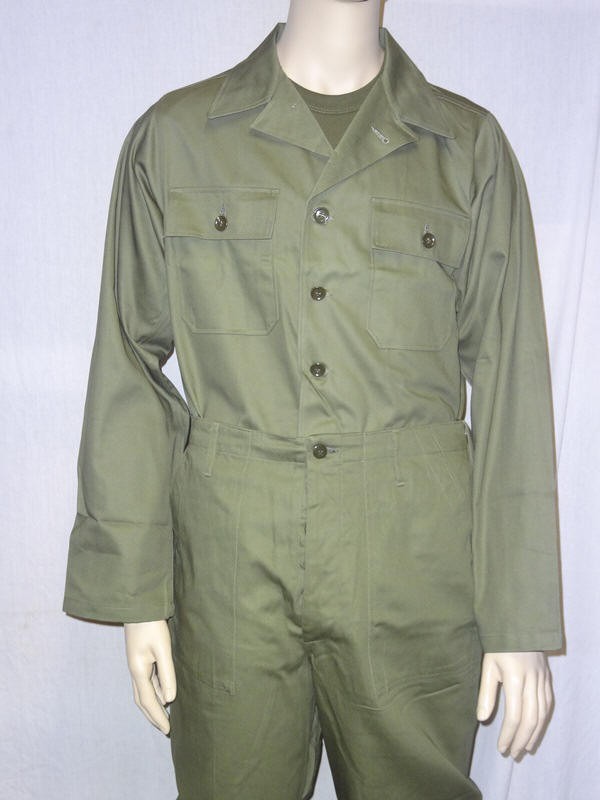
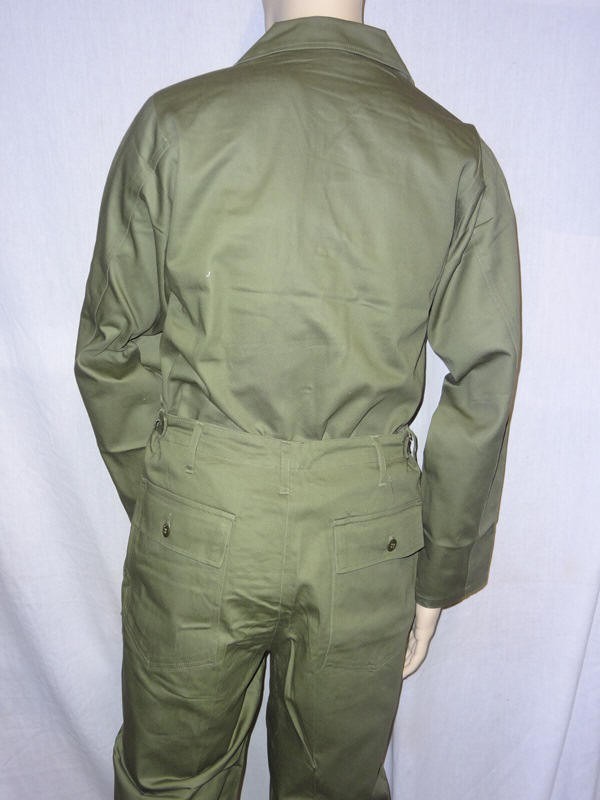
The First Model OG-107's were introduced in 1952 and remained virtually unchanged through their 10 year production run. The shirt featured a sleeve with no true cuff or buttons; it was simply a straight sleeve with a simple hem at the cuff. The shirt's two chest pockets and the pants rear two pockets had a rectangular pocket flap that buttoned. The buttons were the old "dished" style and most of the 50's production are a dark brown color while the majority of 60's production are dark green. The pants also have a simple adjustment tab on the waist that can be buttoned. The shirt and pants were also sized in groups such as Small, Medium, Large, etc. The First Model OG-107 was replaced in April of 1963 when specs came out for the second model. It should be noted that when you look at photographs, this is by far the most common pattern seen in Vietnam in the early to mid 1960's as a result of the long production time.
The Second Model OG-107's were specified for production in April of 1963 and had several slight variations from the First Model. The only change of any real significance is the alteration of the pocket flaps on the coat. The corners of the pocket flaps were "clipped" so that they no longer appeared rectangular. As with the First Model, the shirt and pants were also sized in groups such as Small, Medium, Large, etc. Due to the limited production time before the Third Model was specified, these are not seen nearly as often as the First Model or Third Model.
The Third Model OG-107 is the version that most people are familiar with and can be split into two categories based on time of manufacture and material. This model was specified at the very end of 1964 and was still the standard 8.5 ounce cotton sateen. However, due to the changes and production / distribution time, they are not really seen until 1966. The Third Model maintained all of the key distinctive style features such as the pockets, etc., but they have some key differences. The two shirt chest pockets received a pointed pocket flap. The shirt also received a button cuff at the wrist. The buttons were changed to the "standard" dull plastic button as used on jungle fatigues (and later BDU's). Another change to the pant was the removal of the waist adjustment tab. Both the shirt and pant also adopted the "true measurement" sizing style. For example, pants were marked in waist and inseam length (32" x 34" would show a pant with a 32" waist and 34" inseam) and the shirts were marked in neck size and sleeve length (16.5" x 34" would show a shirt with a 16.5" neck and a 34" sleeve length). The second category of this model as mentioned above came in to use in the mid-1970's and was in production until being replaced by Woodland BDU's . This second category was created when the material was switched from 100% cotton to a 50/50 blend of Poly / Cotton. These mixed OG-107's are often referred to as "Dura-Press" due to the fact that they do not require extensive starching and they can often be quickly identified by a yellow tag in the garment.
There are three basic types or "patterns" of Tropical Combat Uniforms (Jungle Fatigues) used in Vietnam with the third style being divided into subcategories. As background, the United States had a difficult time in implementing the Tropical Uniforms and maintaining sufficient stocks. It was not until 1967 that Tropical Uniforms were authorized for all personnel in Vietnam. Note: Approximate dates are given for each type, however, the earlier types saw use throughout the war. The supply stocks were stretched and soldiers wore out the light weight uniforms with alarming speed. Photographic evidence clearly shows first and second pattern fatigues being worn much later in the war. Remember, just because a new design is introduced does not mean that all of the old stocks were liquidated.
All of the Tropical Combat Uniforms (herein known as jungle fatigues) shared several basic characteristics. The coat consisted of two slant pockets on the chest and two lower bellows pockets. Each of these pockets closed with two buttons and the coat had a button front closure. The pants consisted of two hip pockets with single button closure, two slash pockets at the hips and two bellows pockets on the thigh with dual button closure. The left thigh bellows pocket also had a "hidden" survival pocket located inside. The pants could be either button fly or zip. A "quick check" to tell modern pants from Vietnam vintage is to check for: 1) VN era pants do not have seat re-enforcements, or knee re-enforcements 2) VN era pants have one button for each hip pocket, not two as on modern pants 3) VN era pants have the "hidden" pocket inside the left thigh bellows pocket.
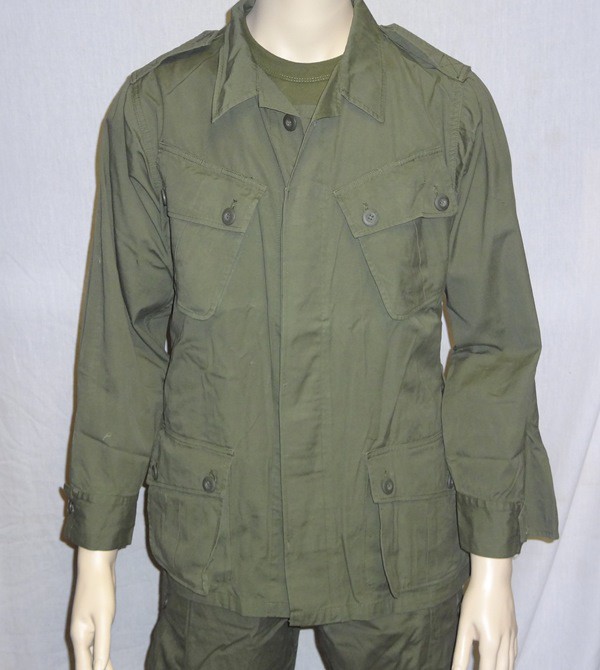
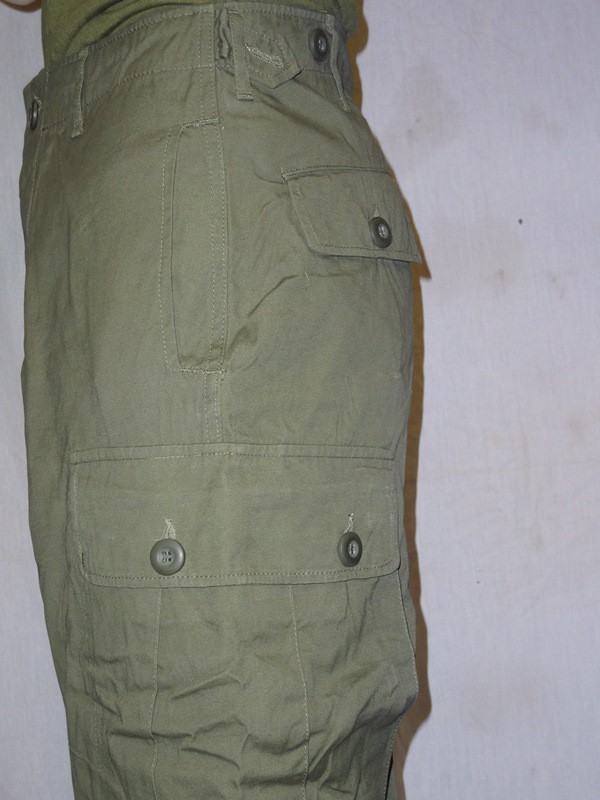
The first pattern jungle fatigues were adopted in 1963 and were made of 5.5 ounce cotton poplin dyed Army Shade Olive Green 107 or "OG-107". The pattern is easily distinguishable as the coat and the pants had "exposed" buttons. The coat featured the standard pocket lay out, but the closure buttons were not covered. The jungle fatigue coat also had shoulder epaulettes, side take up tabs, and an integrated gas flap that could be buttoned internally to better cover the neck and prevent chemical / gas agents from entering through the front button closure. The jungle fatigue pants also had the exposed buttons on the pockets and featured leg ties attached in the bellows pockets that could be retracted back in to the pocket. The pants also featured button side take up tabs and an integrated gas flap. I have seen countless photos of this pattern in 1966 and many even later.
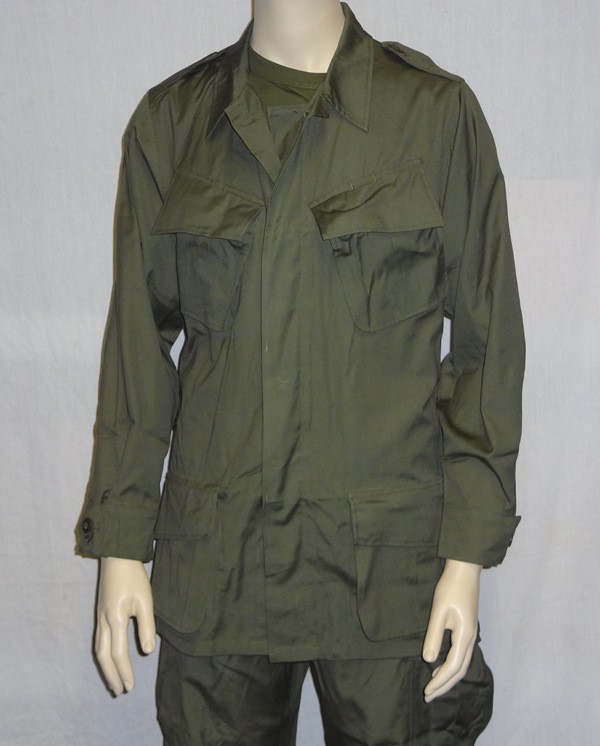
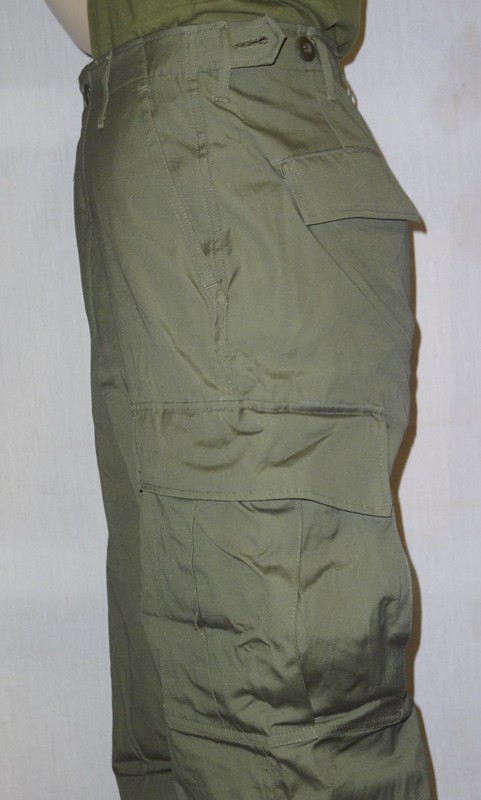
In August 1964, the Army Material Command ordered a revision to the jungle fatigue design. They found that the exposed buttons had a tendency to snag on brush, and addressed this issue. The buttons on the coat and pants were covered, but the epaulettes, side take up tabs, and gas flap were retained. The fabric was changed to 6 ounce cotton poplin to help them wear better and the OG-107 color was retained. This style entered Vietnam in late 1965 and were soon to be replaced in 1967 by the third pattern jungle fatigues though they are commonly seen through 1968.
The third pattern fatigues which were introduced in late 1966 / early 1967 were a simplified version of the second pattern. The coat lost its side take up tabs, gas flap, and shoulder epaulettes. The pants shifted to a web slide take up tab on the waist and lost the gas flap and leg ties. This pattern is slightly more complicated as it was issued in two classes. Class I was OG-107, or green and Class II was ERDL Camouflage in either green dominant (middle photos) or brown dominant (last two photos) depending on the region they were being issued to.
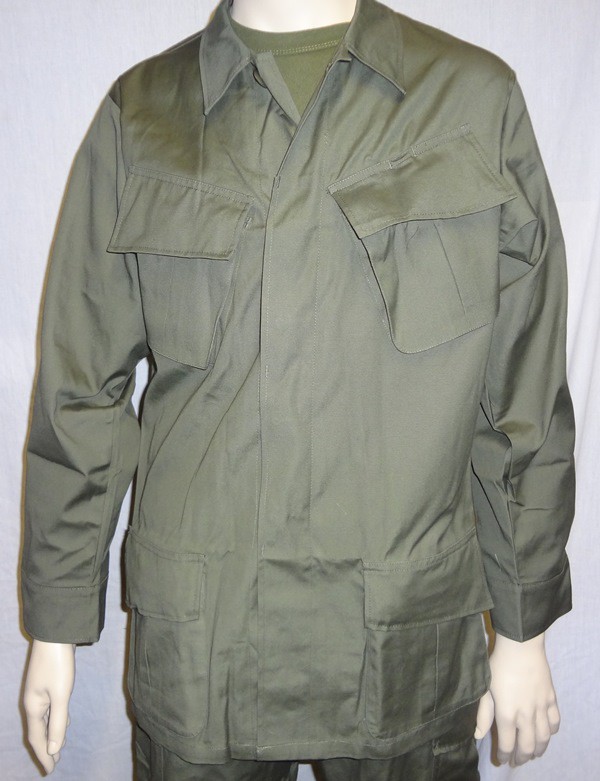
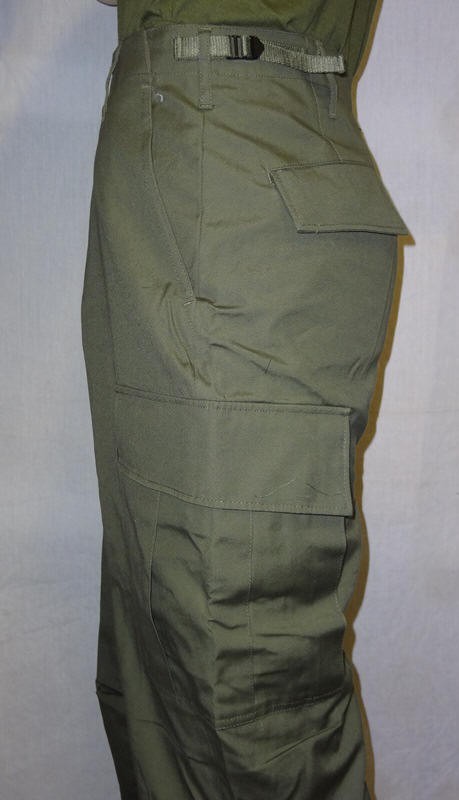
OG-107, or OD Green third pattern jungle fatigues were first produced in poplin cotton with very limited ripstop production occurring in late 1967 with the first contract for ripstop pants. However in mid / late 1968, the more durable ripstop had taken over the majority of production and 1969 saw the end of poplin production as manufacturers finished out early 3rd pattern contracts with stock poplin material on hand. Despite the manufacturing shift to ripstop, poplin remained the most commonly encountered OD jungle fatigues through 1968 simply due to the volume that had been produced. By 1969, you see ripstop in the field in large numbers though poplin can be found in use throughout the end of the war. As a side note, the shift from button fly trousers to zipper fly jungle fatigue pants occurred in the same window as the transition from poplin to ripstop: late 67 to early 68.
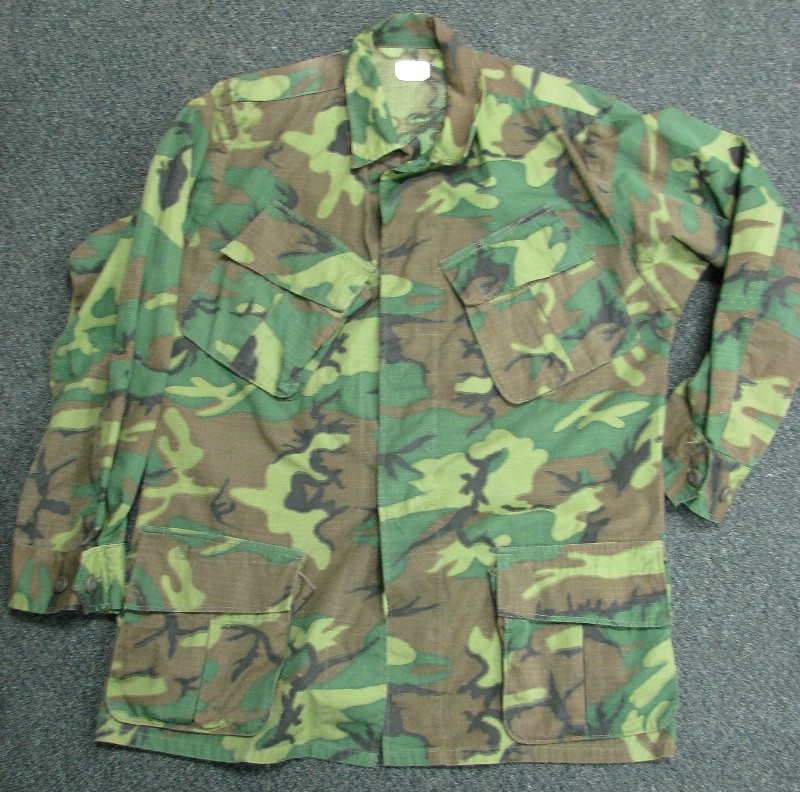
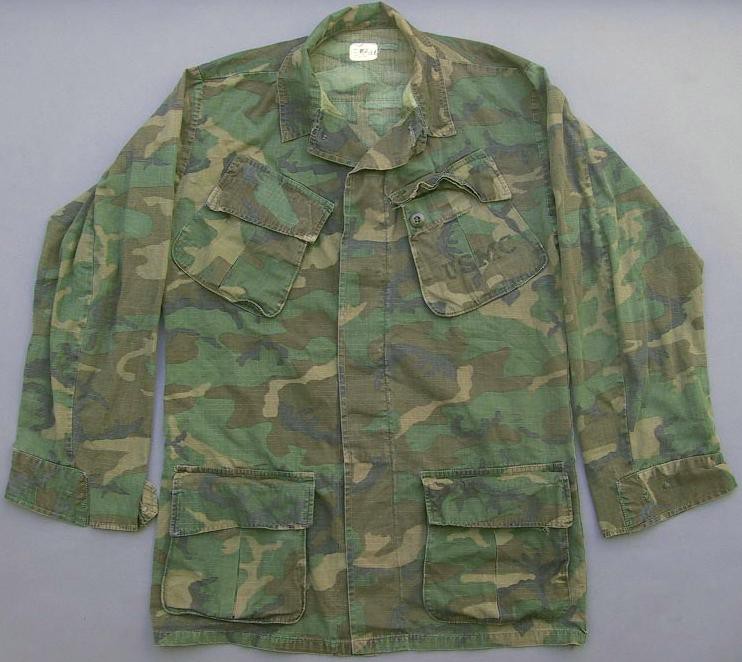
ERDL Camouflage jungle fatigues were first produced in 1967 in cotton poplin and switched to ripstop in 1968. That being stated, you will find poplin in use through the end of the war. Initially issued in both green and brown dominant (depending on the intended terrain), the camouflage pattern was later standardized to reduce supply strains. Initially, the ERDL camo was issued to priority "elite" troops including SOG, SF, LRRP / Ranger Companies, Force Recon, Navy SEALs, Pathfinders, etc. Though never heavily used outside of "elite" forces in the US Army, by the end of 1969 all Marine Corps line infantry were wearing the green dominant ERDL.